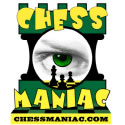Opening theory in chess 1. e4 e5

Black plays the classical response to 1. e4. By mirroring White's move Black has guaranteed himself an equal share of the centre and scope to develop his pieces. 1...e5 is one of the few moves that directly interfere with White's plan of playing d4. But the move's merit is also its drawback; with the position once again symmetrical, White to move has the initiative and sooner or later will be able to break the symmetry to his own advantage. The pawn on e5 is undefended and it is easy for White to develop in a way that restricts Black's possible responses, by simply threatening to capture it. Though the move is still common at every level, it has seen a modest decline in popularity during the 20th century for these reasons.
The classical move for White is 2. Nf3, threatening Black's undefended pawn while developing one of his kingside pieces in preparation for castling. Another plan is to open the f-file for an attack on Black's weak f7 point, an idea which underlies a trio of related moves the variations of which frequently transpose into each other: 2. f4, 2. Nc3 and 2. Bc4.
text is available under the GNU Free Documentation License



















0 Comments:
Post a Comment
<< Home